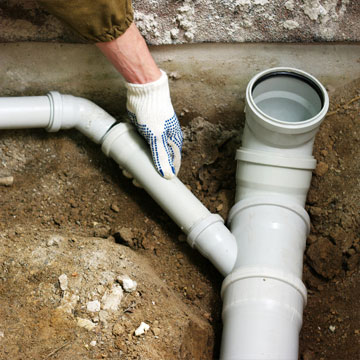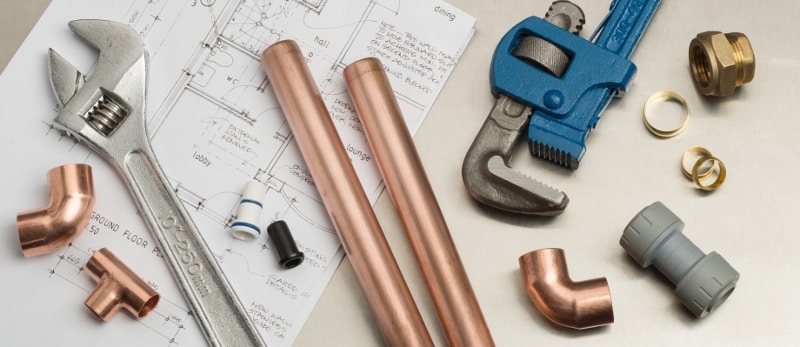Understanding The Anatomy of Your Home's Plumbing System
Understanding The Anatomy of Your Home's Plumbing System
Blog Article
They are making a few good pointers relating to The Inner Workings of Your Home's Plumbing in general in this post which follows.

Comprehending just how your home's pipes system works is vital for each home owner. From delivering clean water for alcohol consumption, cooking, and bathing to safely eliminating wastewater, a well-kept plumbing system is vital for your household's health and wellness and convenience. In this thorough overview, we'll check out the detailed network that composes your home's pipes and deal tips on maintenance, upgrades, and handling common issues.
Intro
Your home's pipes system is greater than simply a network of pipelines; it's a complicated system that ensures you have access to tidy water and reliable wastewater elimination. Recognizing its components and how they work together can help you stop expensive repair services and make sure whatever runs efficiently.
Fundamental Parts of a Plumbing System
Pipelines and Tubing
At the heart of your plumbing system are the pipes and tubes that carry water throughout your home. These can be constructed from various products such as copper, PVC, or PEX, each with its benefits in terms of durability and cost-effectiveness.
Fixtures: Sinks, Toilets, Showers, and so on.
Components like sinks, toilets, showers, and bathtubs are where water is used in your home. Comprehending exactly how these fixtures attach to the plumbing system aids in detecting problems and intending upgrades.
Valves and Shut-off Factors
Shutoffs regulate the flow of water in your plumbing system. Shut-off valves are crucial during emergency situations or when you require to make repair work, enabling you to separate parts of the system without disrupting water circulation to the entire residence.
Supply Of Water System
Main Water Line
The major water line connects your home to the municipal water system or an exclusive well. It's where water enters your home and is dispersed to various fixtures.
Water Meter and Pressure Regulator
The water meter steps your water use, while a stress regulatory authority makes certain that water flows at a safe pressure throughout your home's plumbing system, preventing damage to pipes and components.
Cold Water vs. Warm water Lines
Understanding the distinction between cold water lines, which provide water straight from the main, and hot water lines, which bring warmed water from the hot water heater, assists in troubleshooting and planning for upgrades.
Drain System
Drain Water Lines and Traps
Drain pipelines bring wastewater far from sinks, showers, and commodes to the sewer or septic tank. Traps stop sewage system gases from entering your home and additionally trap debris that could trigger clogs.
Air flow Pipes
Ventilation pipes allow air into the drainage system, avoiding suction that might slow drainage and cause traps to empty. Appropriate ventilation is vital for keeping the honesty of your pipes system.
Relevance of Correct Drainage
Ensuring proper drainage avoids backups and water damage. Routinely cleansing drains pipes and maintaining catches can stop pricey repair work and prolong the life of your plumbing system.
Water Heating System
Sorts Of Water Heaters
Water heaters can be tankless or typical tank-style. Tankless heating units warmth water as needed, while tanks save warmed water for immediate usage.
Upgrading Your Pipes System
Factors for Upgrading
Updating to water-efficient components or replacing old pipelines can enhance water quality, decrease water bills, and raise the value of your home.
Modern Pipes Technologies and Their Advantages
Explore modern technologies like wise leakage detectors, water-saving bathrooms, and energy-efficient water heaters that can save cash and decrease environmental effect.
Cost Factors To Consider and ROI
Calculate the in advance costs versus long-lasting savings when taking into consideration plumbing upgrades. Numerous upgrades pay for themselves via minimized utility costs and less repair work.
How Water Heaters Attach to the Plumbing System
Understanding just how water heaters attach to both the cold water supply and hot water circulation lines assists in diagnosing problems like insufficient warm water or leaks.
Maintenance Tips for Water Heaters
Consistently flushing your water heater to remove sediment, examining the temperature settings, and checking for leakages can prolong its lifespan and enhance energy performance.
Common Pipes Issues
Leakages and Their Causes
Leakages can happen because of maturing pipes, loosened installations, or high water pressure. Addressing leaks immediately avoids water damages and mold development.
Clogs and Obstructions
Clogs in drains and commodes are typically brought on by purging non-flushable items or a buildup of grease and hair. Utilizing drainpipe screens and bearing in mind what goes down your drains pipes can protect against blockages.
Indicators of Plumbing Issues to Expect
Low water stress, slow-moving drains pipes, foul odors, or abnormally high water costs are signs of possible pipes issues that ought to be attended to quickly.
Plumbing Maintenance Tips
Normal Assessments and Checks
Set up annual plumbing evaluations to capture concerns early. Try to find indications of leaks, rust, or mineral buildup in taps and showerheads.
Do It Yourself Maintenance Tasks
Straightforward jobs like cleaning faucet aerators, looking for bathroom leaks utilizing dye tablets, or insulating subjected pipelines in chilly environments can protect against major pipes concerns.
When to Call a Professional Plumbing
Know when a pipes problem needs expert experience. Trying complicated repair services without correct understanding can bring about even more damages and greater repair expenses.
Tips for Reducing Water Usage
Basic routines like taking care of leakages immediately, taking much shorter showers, and running complete lots of washing and meals can save water and lower your energy expenses.
Eco-Friendly Pipes Options
Take into consideration sustainable plumbing products like bamboo for floor covering, which is durable and eco-friendly, or recycled glass for counter tops.
Emergency situation Readiness
Actions to Take Throughout a Pipes Emergency
Know where your shut-off valves lie and exactly how to shut off the supply of water in case of a ruptured pipe or major leakage.
Relevance of Having Emergency Contacts Helpful
Keep contact details for regional plumbers or emergency solutions readily offered for quick response during a pipes situation.
Environmental Influence and Conservation
Water-Saving Components and Home Appliances
Setting up low-flow taps, showerheads, and bathrooms can considerably reduce water usage without compromising efficiency.
DIY Emergency Fixes (When Suitable).
Short-lived repairs like making use of duct tape to patch a leaking pipeline or putting a container under a dripping faucet can reduce damages till an expert plumbing gets here.
Final thought.
Understanding the makeup of your home's plumbing system encourages you to preserve it properly, saving money and time on repairs. By adhering to regular upkeep regimens and staying notified concerning modern-day plumbing innovations, you can guarantee your pipes system runs efficiently for years to come.
HOW YOUR PLUMBING SYSTEM WORKS
Which Pipes Do What?
Blue lines = fresh water supply entering the building Red lines = hot water supply entering the building Grey lines = pipes carrying waste away from the building and venting pipes carrying gases away from the building (through the roof) YOUR MAIN PLUMBING SYSTEMS
There are two main plumbing systems that support your home s basic plumbing needs one that brings clean water into your home, and one that sends dirty water away from your home. Connected to the toilet, bath, shower, and other faucets in your home, these two systems keep your water flowing in the right directions.
ACCESSING FRESH WATER
Fresh and clean water is brought into your home through the main water supply line . Filtered through one pipe, this water is pressured to flow into the various fixtures in your home at any given time.
This water can be sourced from a well located on your property, a pond or river (mostly cottages), or, as in most cases, from the city s municipal water treatment centre. However, it is important to note that water that is untreated, such as the water siphoned from ponds or rivers, may not be safe to drink. Personal water supplies always need to be treated for hardness and contaminants before consumed.
MUNICIPAL WATER SUPPLIES
Improve taste and odour Remove sediment Eliminate hardness Reduce chlorine COLD WATER SUPPLY VS. HOT WATER SUPPLY
Cold water flows into your home or building through the service line, which then distributes hot or cold water to your fixtures. This line is most commonly run through a central column that runs floor to floor. Hot water runs in short and straight pipes as the longer the pipeline, the more heat that will be lost in the transfer. Having shorter pipes also allows residents to access hot water more quickly.
WASTE WATER SYSTEM
Your wastewater system is divided into two parts pipes that send wastewater away from your home and venting pipes that send sewer gas away from your home. Sewage water travels through pipes that flush the water and waste towards local sewers that are operated and managed by your city or town. Most sewer systems rely on gravity to move the wastewater to where it needs to go.
The further away from your toilet or sink, the larger wastewater pipes become. This allows for waste to be disposed of from various parts of your home or business at once without pipe blockages. The angle and flow of these pipes are also essential for keeping your waste pipes clear of build up.
https://harrisplumbing.ca/how-your-home-plumbing-system-works/

As a passionate person who reads on Exploring Your Homes Plumbing Anatomy, I was thinking sharing that information was smart. Be sure to take the opportunity to share this blog post if you liked it. Thanks a lot for taking the time to read it.
Schedule Services Report this page